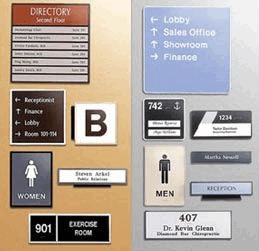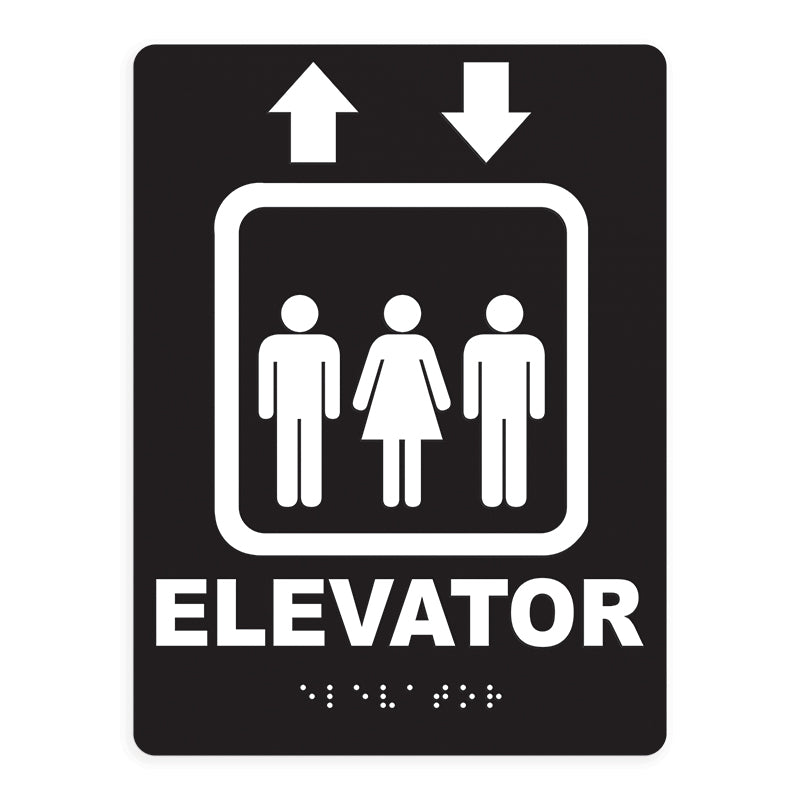The Advantages of Using Premium ADA Signs in Your Organization
The Advantages of Using Premium ADA Signs in Your Organization
Blog Article
Checking Out the Secret Functions of ADA Indications for Enhanced Access
In the realm of accessibility, ADA indicators serve as silent yet effective allies, guaranteeing that spaces are comprehensive and accessible for individuals with handicaps. By incorporating Braille and responsive elements, these indications damage barriers for the aesthetically impaired, while high-contrast color plans and understandable font styles provide to diverse visual demands.
Importance of ADA Compliance
Guaranteeing compliance with the Americans with Disabilities Act (ADA) is important for cultivating inclusivity and equal gain access to in public spaces and work environments. The ADA, established in 1990, mandates that all public centers, companies, and transportation solutions suit individuals with impairments, ensuring they enjoy the same legal rights and possibilities as others. Conformity with ADA criteria not just meets lawful obligations however additionally enhances an organization's reputation by demonstrating its commitment to diversity and inclusivity.
One of the crucial elements of ADA conformity is the execution of accessible signs. ADA signs are developed to make sure that individuals with specials needs can conveniently navigate through spaces and buildings. These indications should abide by certain guidelines regarding dimension, typeface, shade contrast, and positioning to ensure exposure and readability for all. Appropriately applied ADA signs aids remove obstacles that people with impairments commonly encounter, thereby advertising their self-reliance and confidence (ADA Signs).
Additionally, adhering to ADA policies can alleviate the danger of possible penalties and legal repercussions. Organizations that fail to adhere to ADA standards might deal with lawsuits or fines, which can be both damaging and monetarily troublesome to their public photo. Therefore, ADA conformity is integral to cultivating an equitable setting for everyone.
Braille and Tactile Aspects
The incorporation of Braille and tactile aspects right into ADA signs personifies the concepts of availability and inclusivity. It is typically put underneath the matching message on signs to ensure that individuals can access the information without visual support.
Responsive components extend beyond Braille and include raised characters and icons. These parts are made to be noticeable by touch, allowing individuals to determine space numbers, toilets, leaves, and various other critical locations. The ADA establishes specific guidelines regarding the dimension, spacing, and placement of these tactile aspects to enhance readability and ensure consistency across various settings.

High-Contrast Color Pattern
High-contrast color plans play a pivotal duty in improving the exposure and readability of ADA signs for individuals with aesthetic impairments. These systems are important as they optimize the distinction in light reflectance between text and background, ensuring that indicators are quickly discernible, even from a distance. The Americans with Disabilities Act (ADA) mandates making use of particular shade contrasts to accommodate those with minimal vision, making it a vital aspect of conformity.
The effectiveness of high-contrast shades lies in their capacity to attract attention in different lights conditions, including poorly lit atmospheres and locations with glare. Normally, dark message on a light background or light message on a dark background is utilized to attain optimal contrast. As an example, black message on a white or yellow history provides a stark aesthetic distinction that aids in quick acknowledgment and understanding.

Legible Fonts and Text Size
When considering the design of ADA signs, the selection of understandable font styles and appropriate text dimension can not be overemphasized. The Americans with Disabilities Act (ADA) mandates that font styles should be sans-serif and not italic, oblique, script, highly decorative, or of uncommon type.
The size of the text likewise plays an essential function in ease of access. According to ADA standards, the minimal text height must be 5/8 inch, and it must raise proportionally with watching distance. This is specifically important in public spaces where signage demands to be checked out quickly and properly. Consistency in message size adds to a natural visual experience, assisting individuals in browsing atmospheres efficiently.
Additionally, spacing in between letters and lines is important to readability. go to my blog Ample spacing protects against personalities from appearing crowded, improving readability. By adhering to these requirements, developers can considerably boost ease of access, making certain that signage offers its designated purpose for all individuals, no matter of their visual abilities.
Reliable Positioning Methods
Strategic placement of ADA signage is crucial for making best use of ease of access and guaranteeing conformity with legal requirements. Effectively positioned signs assist individuals with specials needs properly, facilitating navigation in public areas. Secret factors to consider include height, distance, and exposure. ADA standards specify that indicators should be mounted at a height between 48 to 60 inches from the ground to guarantee they are within the line of sight for both standing and seated people. This standard elevation range is vital for inclusivity, making it possible for mobility device users and dig this individuals of varying heights to accessibility information effortlessly.
In addition, signs need to be put adjacent to the latch side of doors to allow simple identification before access. Consistency in indicator placement throughout a center improves predictability, lowering complication and enhancing overall individual experience.

Verdict
ADA indications play an important role in promoting ease of access by incorporating attributes that deal with the requirements of individuals with impairments. Incorporating Braille and tactile aspects ensures vital details is available to the aesthetically damaged, while high-contrast color design and understandable sans-serif font styles boost visibility throughout various illumination conditions. Efficient positioning strategies, such as suitable installing elevations and critical areas, better promote navigation. These elements collectively foster an inclusive environment, underscoring the value of ADA conformity in making certain equivalent accessibility for all.
In the realm of ease of access, ADA Bonuses signs serve as quiet yet effective allies, ensuring that areas are accessible and comprehensive for people with handicaps. The ADA, established in 1990, mandates that all public centers, companies, and transportation solutions suit individuals with handicaps, guaranteeing they take pleasure in the very same civil liberties and possibilities as others. ADA Signs. ADA indications are made to make certain that people with impairments can easily browse with buildings and rooms. ADA standards stipulate that indications ought to be placed at a height in between 48 to 60 inches from the ground to ensure they are within the line of view for both standing and seated individuals.ADA indicators play an essential function in promoting availability by integrating attributes that deal with the demands of individuals with disabilities
Report this page